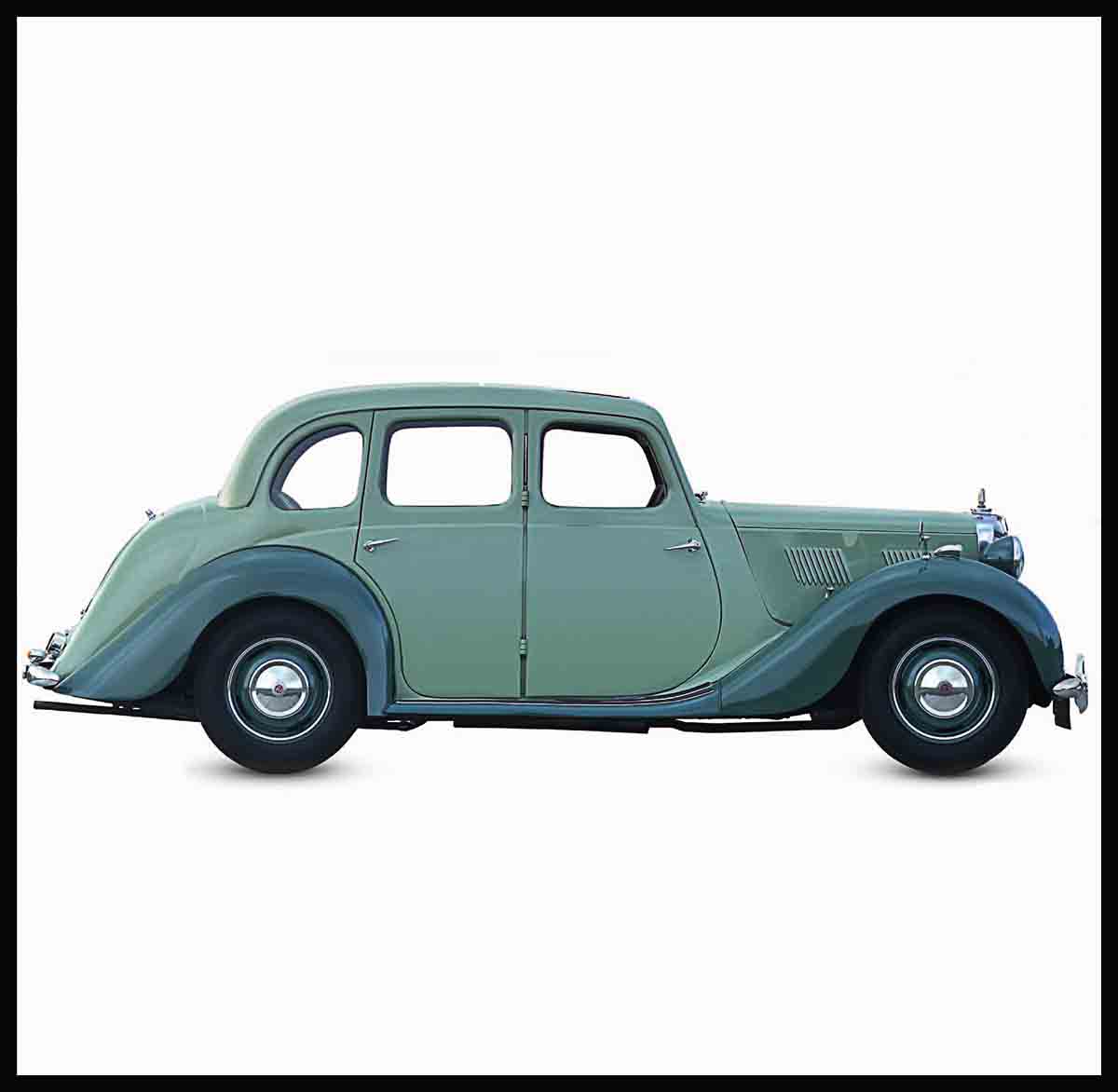
Small Cars
After World War II there was a new automotive revolution. Most soldiers posted overseas had experienced long-distance travel for the first time. On their return home they wanted to be mobile and take their families much farther afield than their fathers had been able to. To meet this demand. manufacturers around the world strove to develop cars for the masses, many of which went on to sell by the million.
Morris Eight Series E, 1938
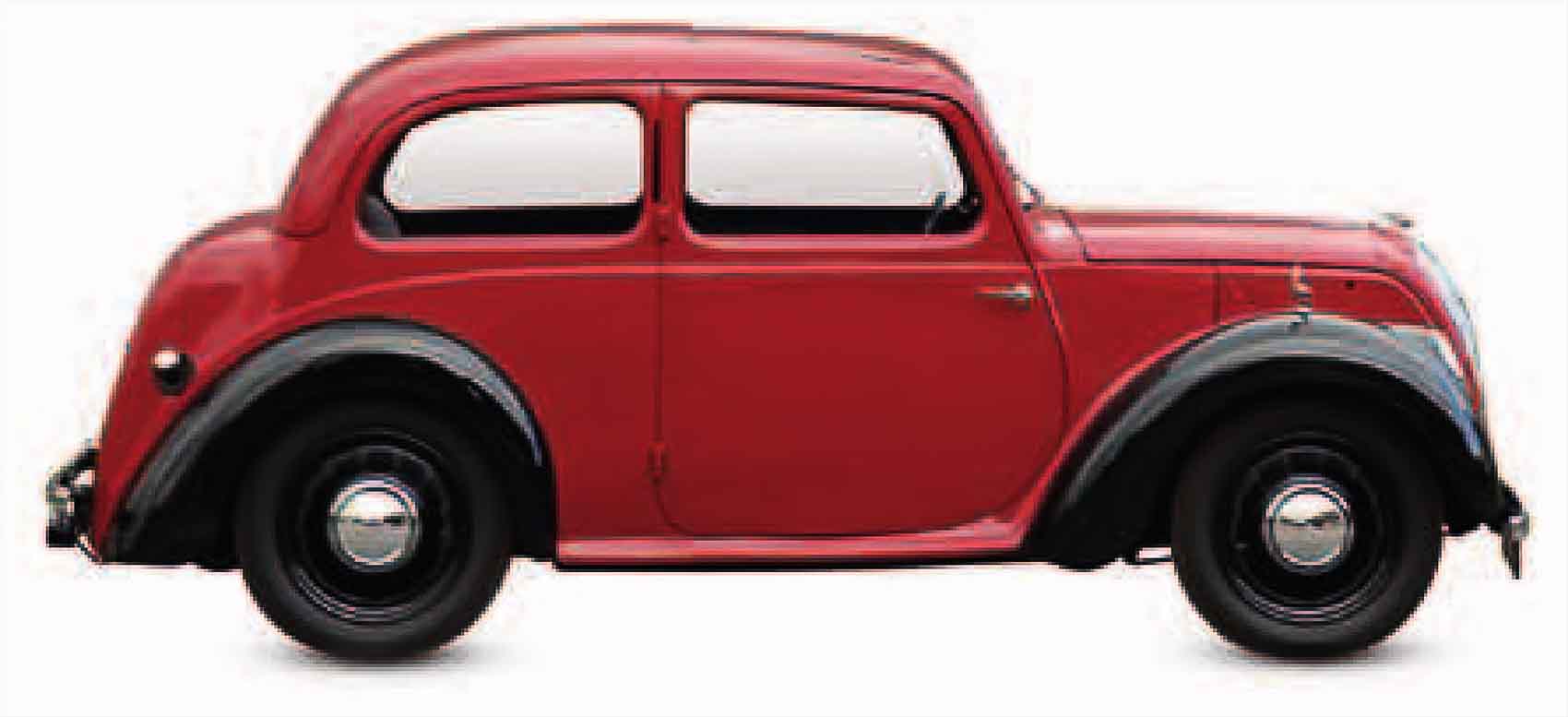
| Origin | UK |
| Engine | 918 cc, straight-four |
| Top speed | 58 mph (93 km/h) |
A pre-war model just modern enough in looks to continue in production post-war, the Series E Morris sold well until the new Morris Minor was ready to take over.
Morris Minor, 1948
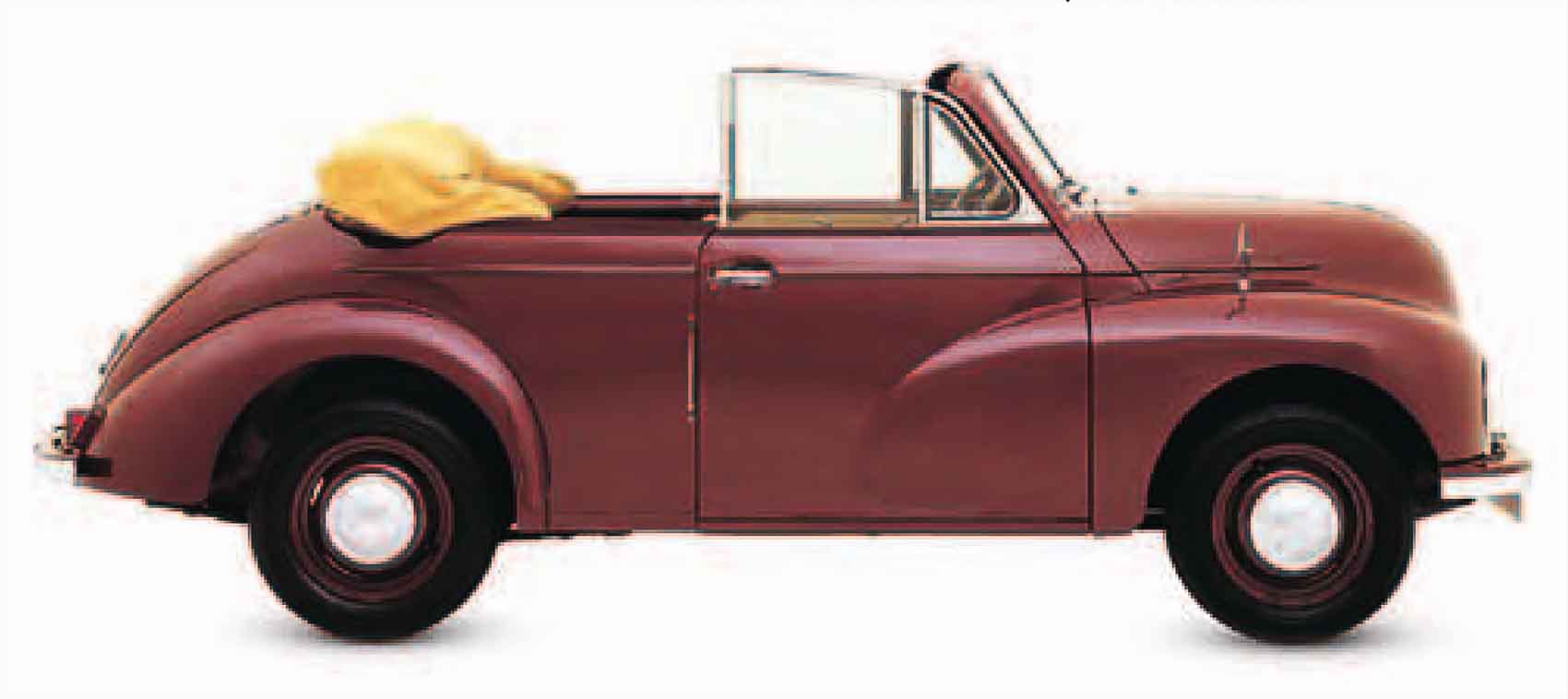
| Origin | UK |
| Engine | 918 cc, straight-four |
| Top speed | 62 mph (100 km/h) |
Alec Issigonis’s brilliant people’s car had a monocoque construction, torsion-bar front suspension, four gears, and modern lines—but not the flat-four engine he had wanted
Volkswagen, 1945
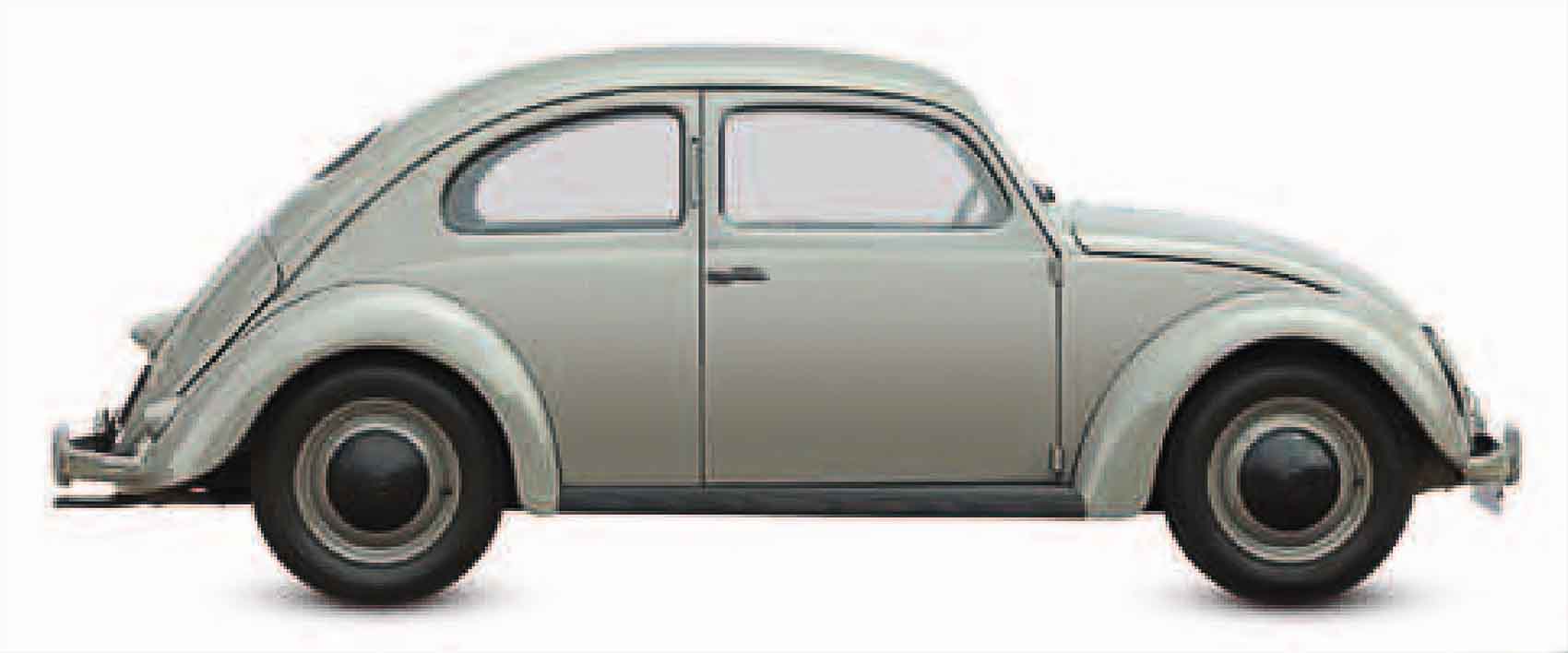
| Origin | Germany |
| Engine | 1,131 cc, flat-four |
| Top speed | 63 mph (101 km/h) |
Designed by Ferdinand Porsche before the war, the “Beetle” would eventually become the best-selling car of all time, thanks to its reliable engine, good space, and low price.
MG Y-type, 1947
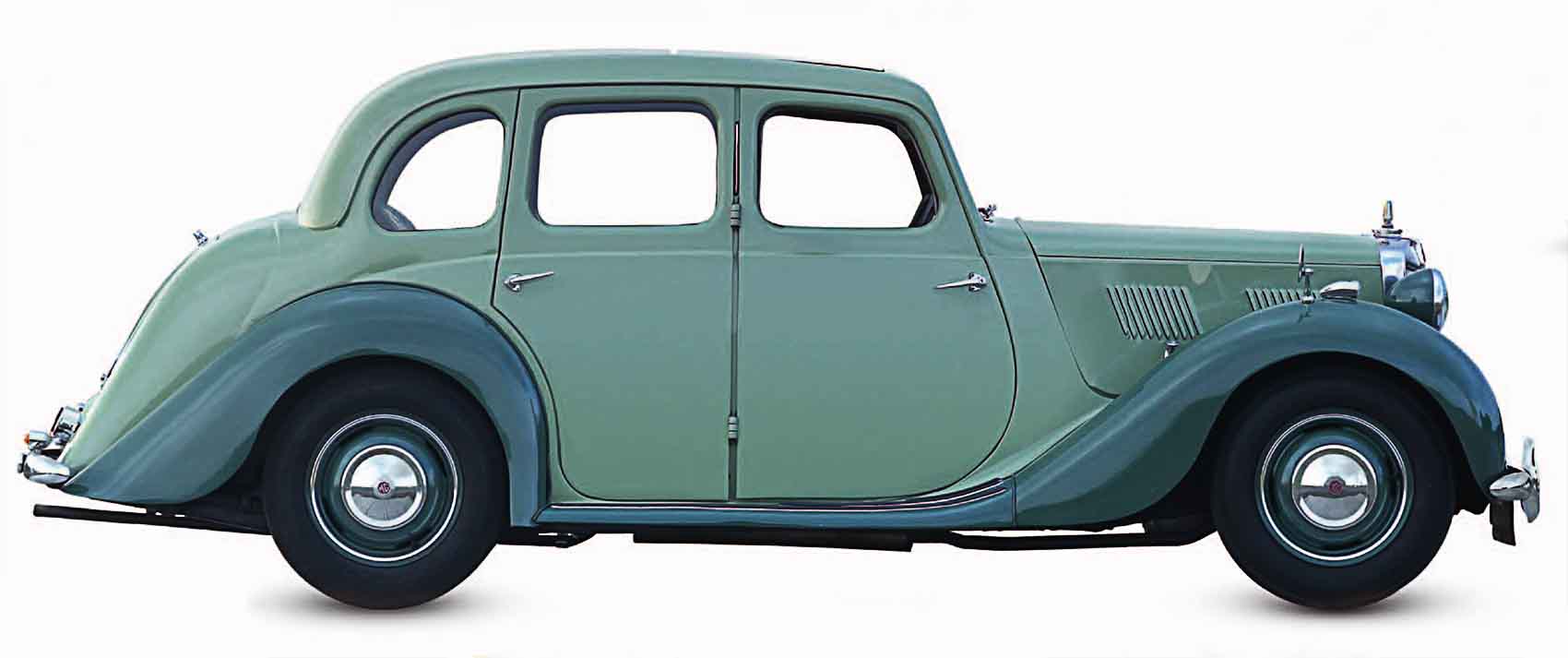
| Origin | UK |
| Engine | 1,250 cc, straight-four |
| Top speed | 71 mph (114 km/h) |
MG lengthened its little TC sports car chassis and added pre-war Morris Eight body panels to create this antiquated but charming sedan, which sold 6,158 from 1947 to 1951.
Toyota Model SA, 1947
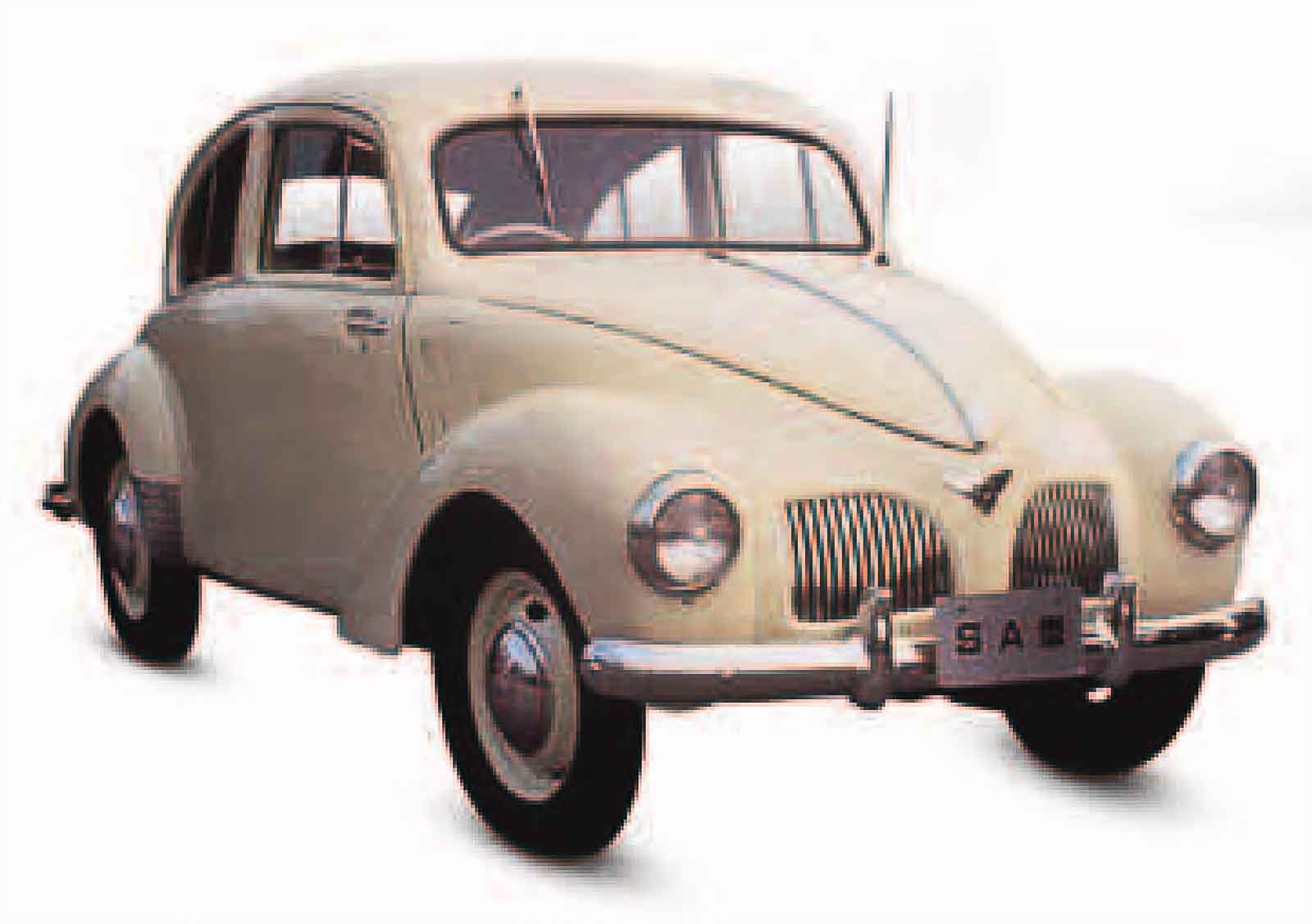
| Origin | Japan |
| Engine | 995 cc, straight-four |
| Top speed | 58 mph (93 km/h) |
Japan’s first new post-war model, the SA mimicked many features of Volkswagen’s Beetle, although its Ford-like engine was mounted at the front rather than the rear.
Ford Taunus G93A, 1948
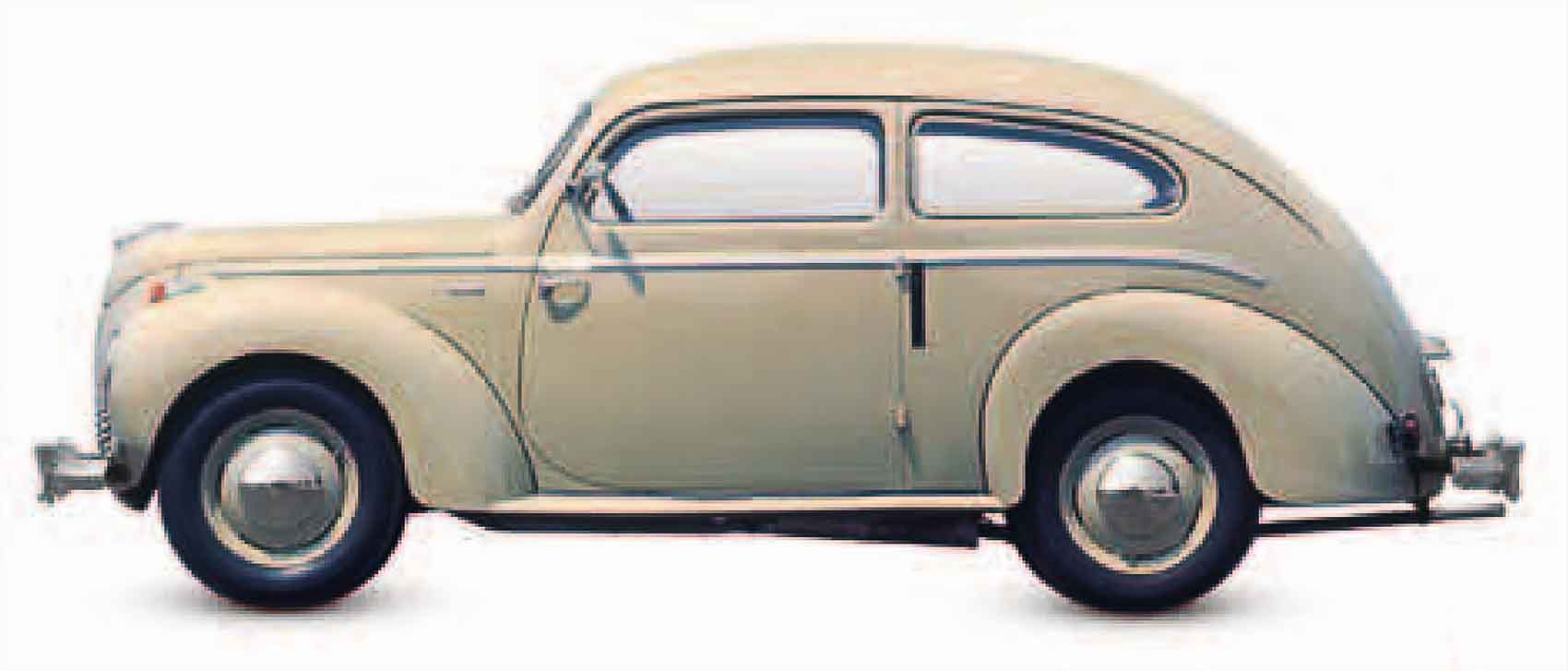
| Origin | Germany |
| Engine | 1,172 cc, straight-four |
| Top speed | 60 mph (97 km/h) |
This German version of Britain’s E93A Ford Prefect had much more modern styling than its counterpart, but it was exactly the same beneath the hood.
Standard 8HP, 1945
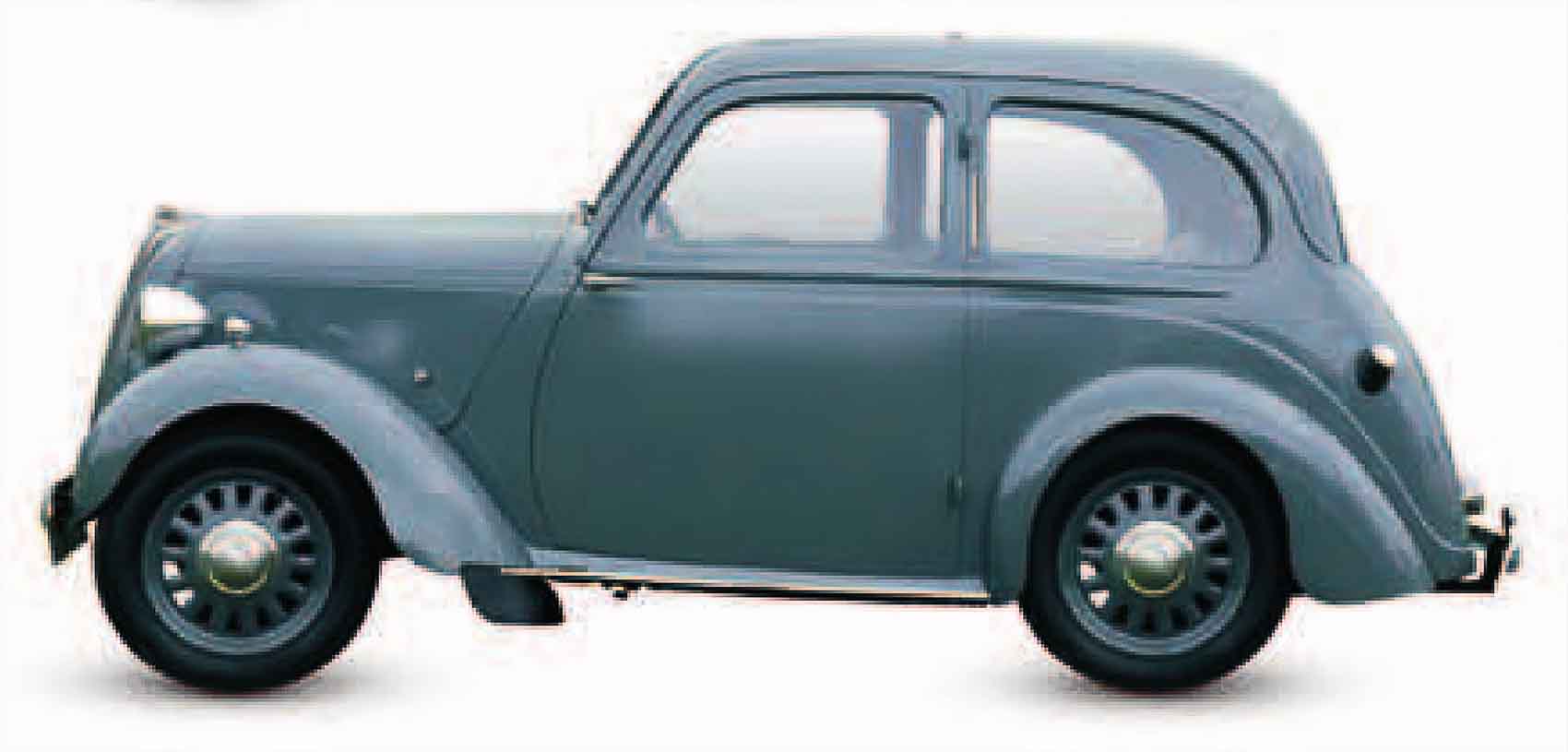
| Origin | UK |
| Engine | 1,009 cc, straight-four |
| Top speed | 60 mph (97 km/h) |
Standard rushed its pre-war Eight back into production in 1945, having improved it with a four-speed gearbox. A competent if unexciting car, it sold 53,099 in three years.
Bond Minicar, 1948
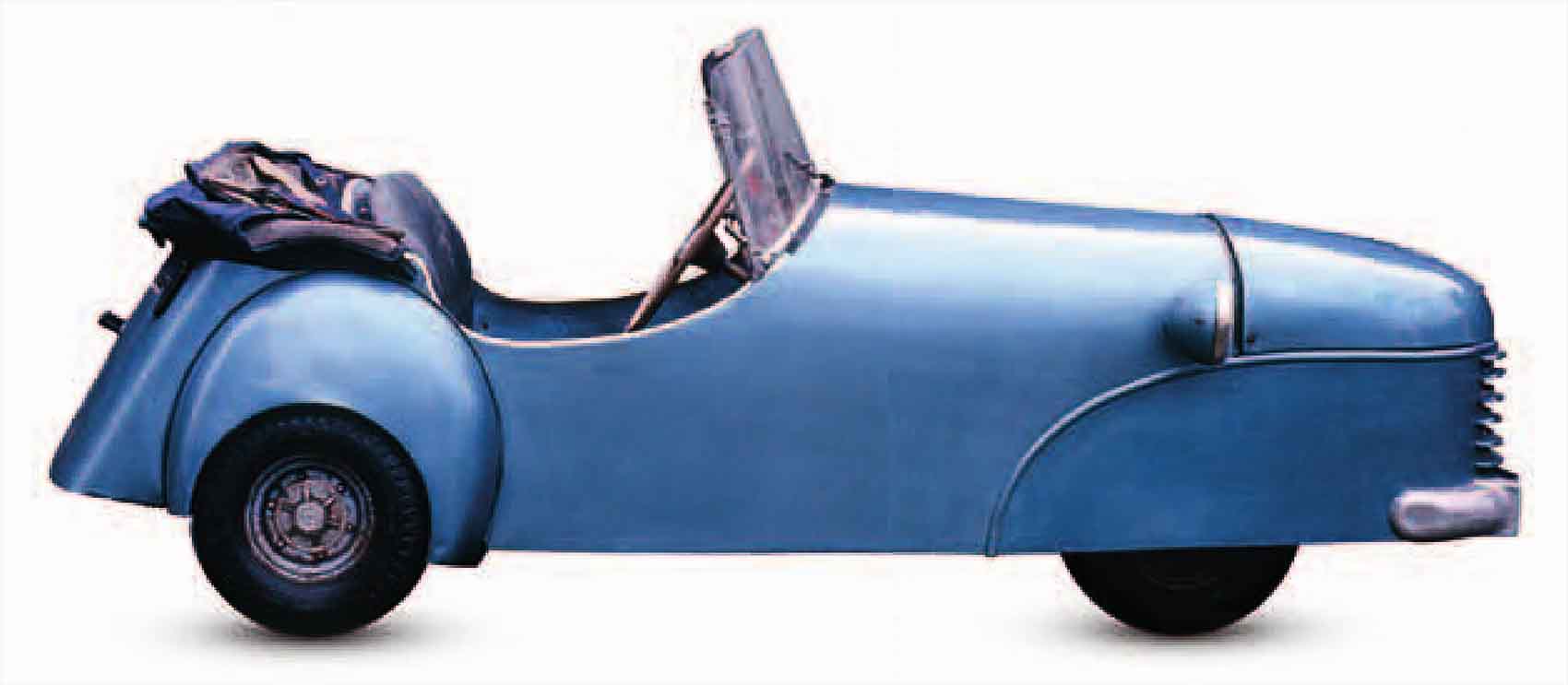
| Origin | UK |
| Engine | 122 cc, one-cylinder |
| Top speed | 38 mph (61 km/h) |
Gasoline rationing and cheap tax for three-wheelers made this two-seater ideal for the austerity of post-war Britain. The two-stroke engine pivoted with the car’s front wheel.
Datsun DB, 1948
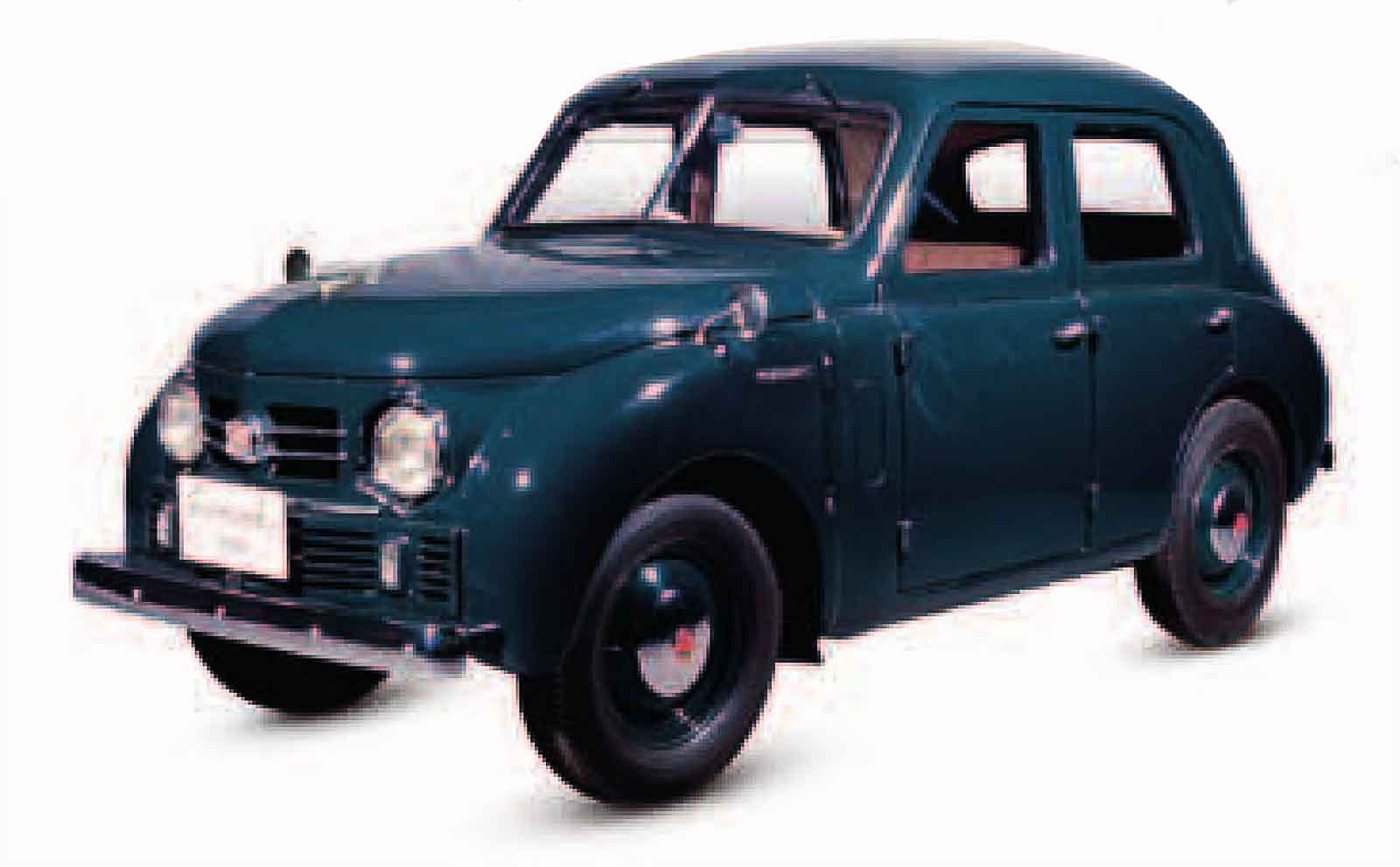
| Origin | Japan |
| Engine | 722 cc, straight-four |
| Top speed | 50 mph (80 km/h) |
With styling copied from the U.S.-built Crosley, this was Japan’s first modern-looking car. The DB used a pre-war Datsun truck chassis and a side-valve car engine.
Crosley, 1948
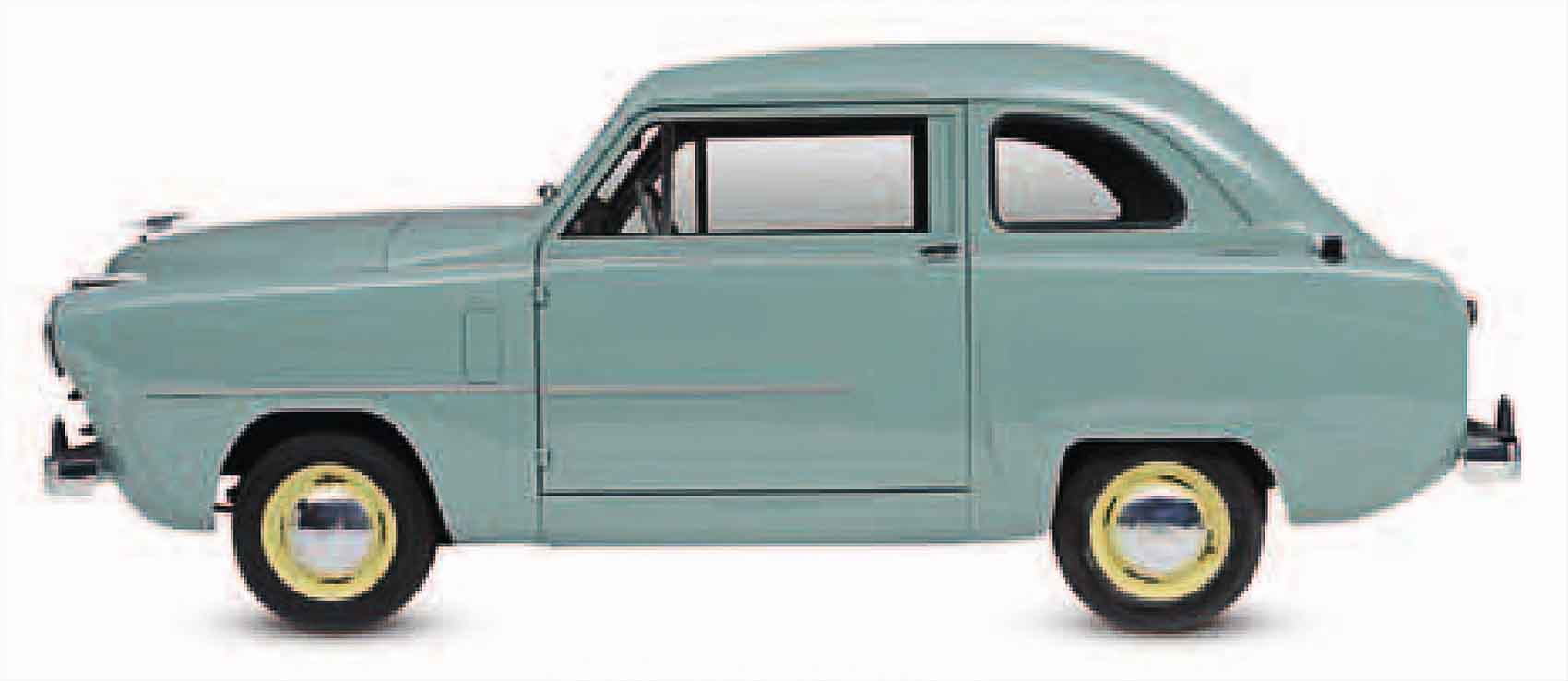
| Origin | USA |
| Engine | 721 cc, straight-four |
| Top speed | 70 mph (113 km/h) |
The slab-sided Crosley showed great promise with its unique sheet-steel, overhead-camshaft engine, but it failed to win over the US car-buying public.
Citroën 2CV, 1948
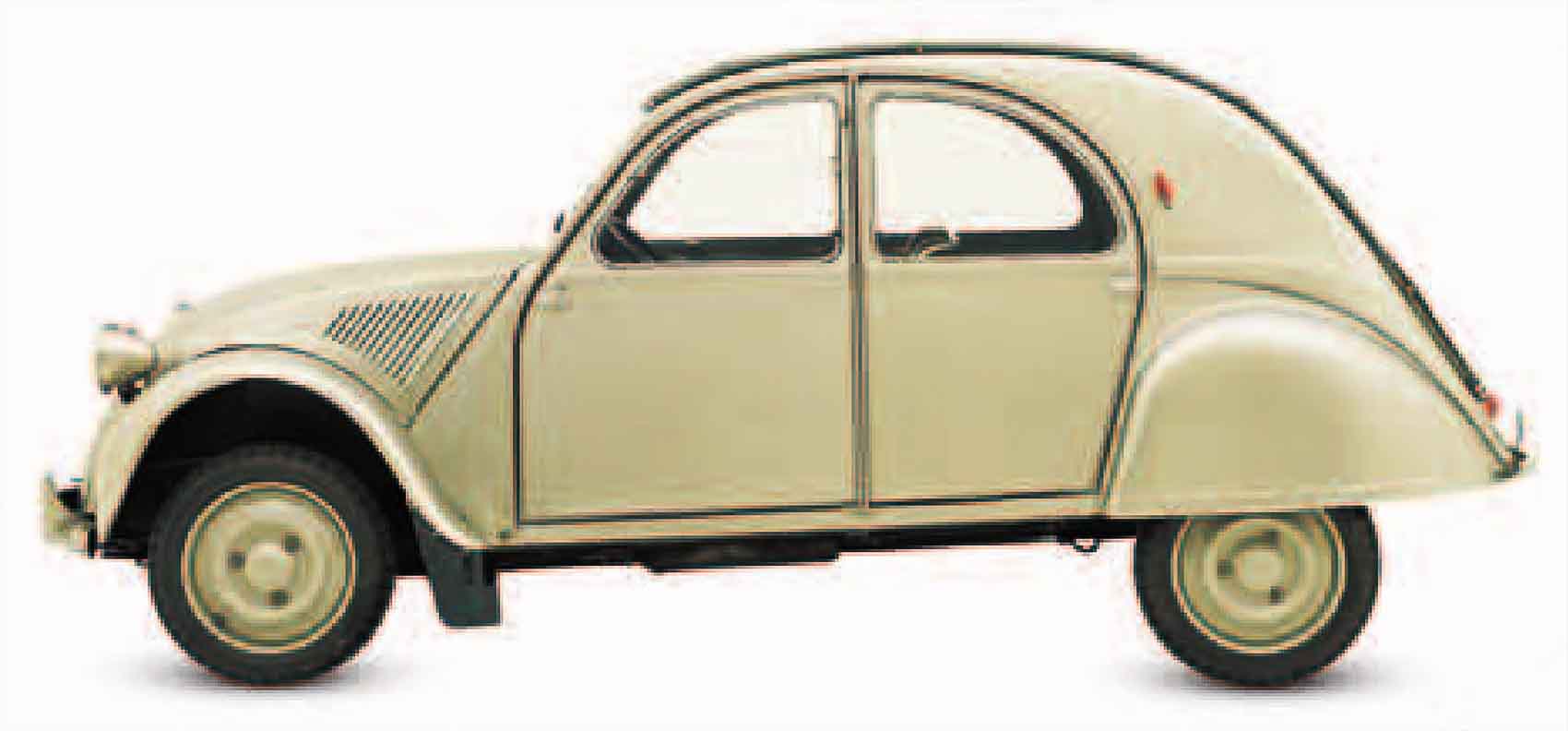
| Origin | France |
| Engine | 375 cc, flat-two |
| Top speed | 39 mph (63 km/h) |
Derived from a 1930s plan to develop a car to replace the horse and cart in rural France, the 2CV became a favorite in both town and country. The 2CV’s crude looks belied its high-quality, innovative engineering
Fiat 500C, 1949
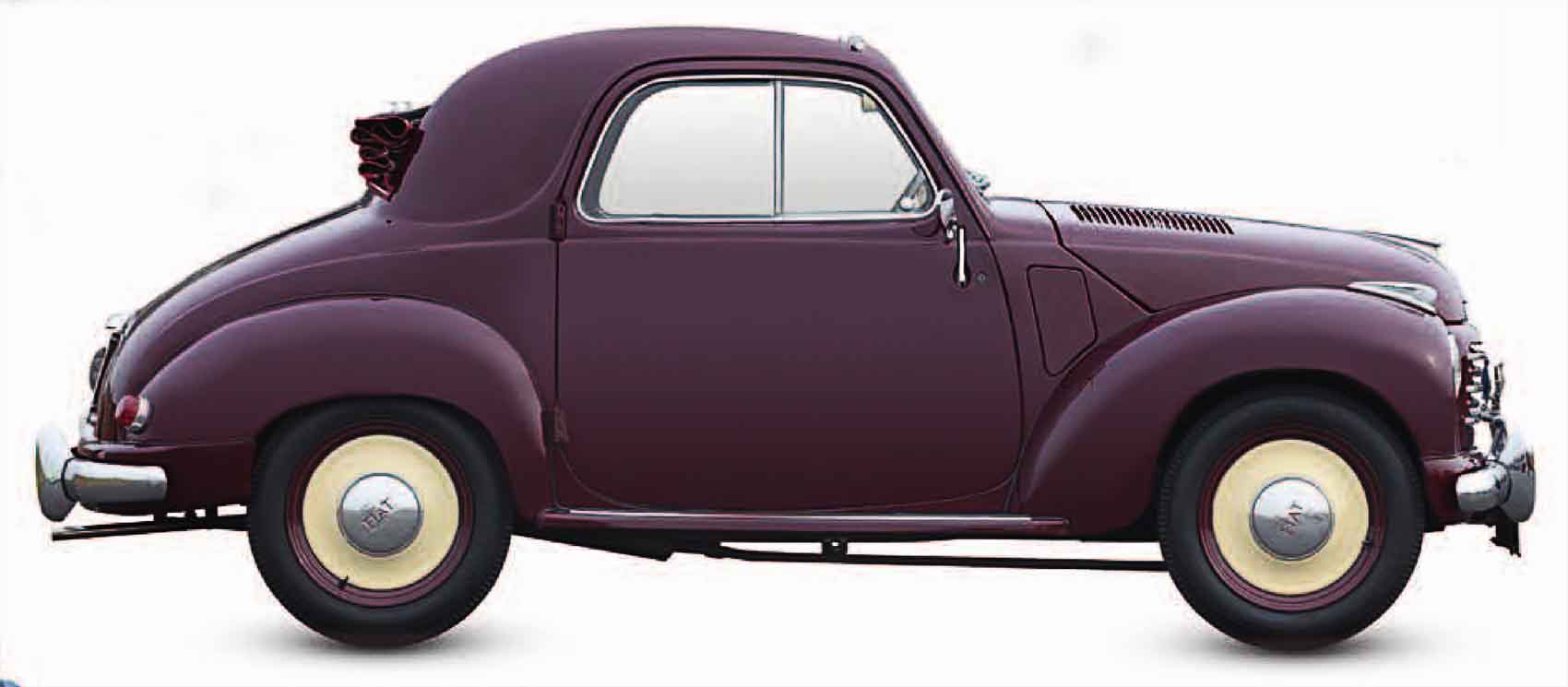
| Origin | Italy |
| Engine | 569 cc, straight-four |
| Top speed | 60 mph (97 km/h) |
This was the final version of Dante Giacosa’s brilliant 1937 “Topolino” (Little Mouse), which mobilized the population of Italy with its well-packaged conventional layout
Renault 4CV, 1946
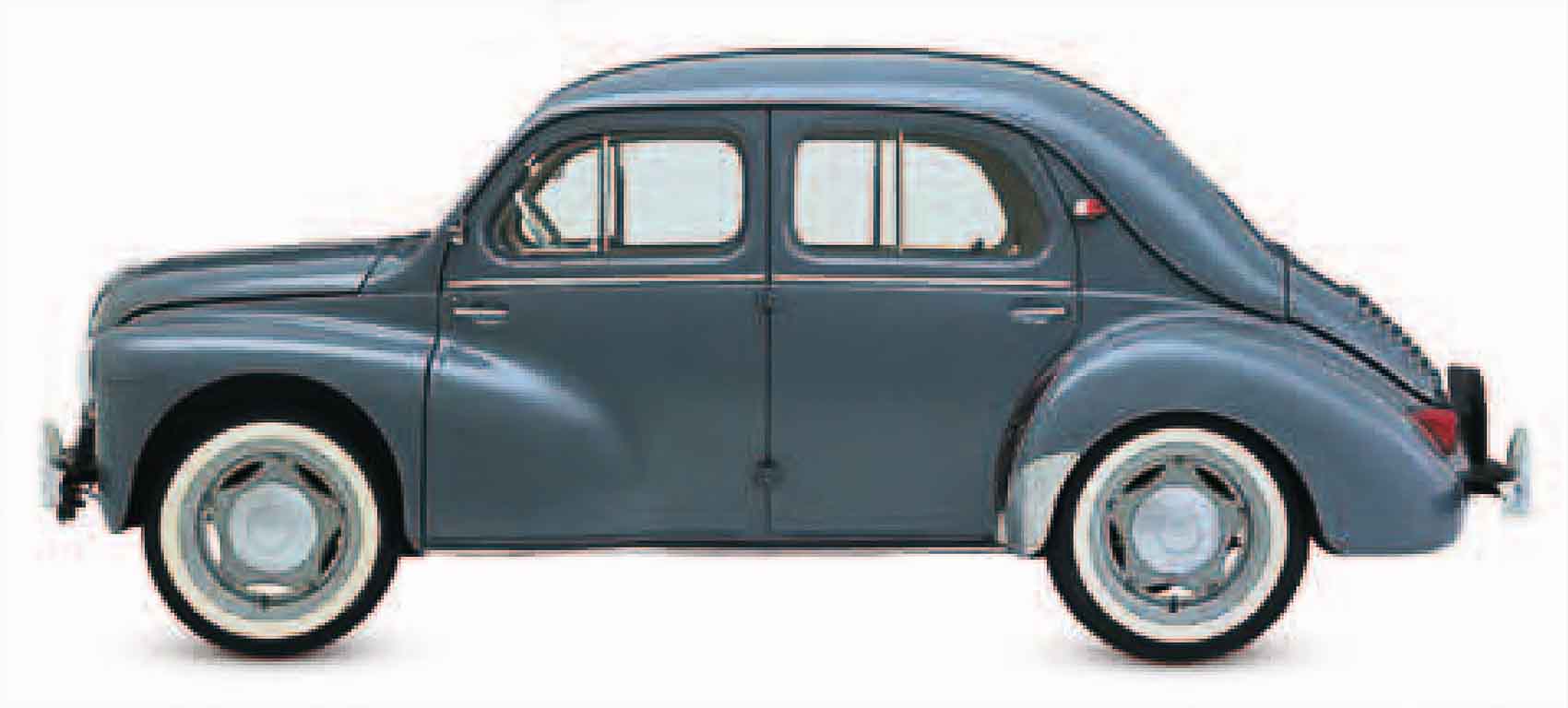
| Origin | France |
| Engine | 760 cc, straight-four |
| Top speed | 57 mph (92 km/h) |
The 4CV looked similar to its British rival, the Morris Minor, but it had all-independent suspension and a rear-mounted engine; it was also quicker to reach a million sales.
Austin A40 Devon, 1947
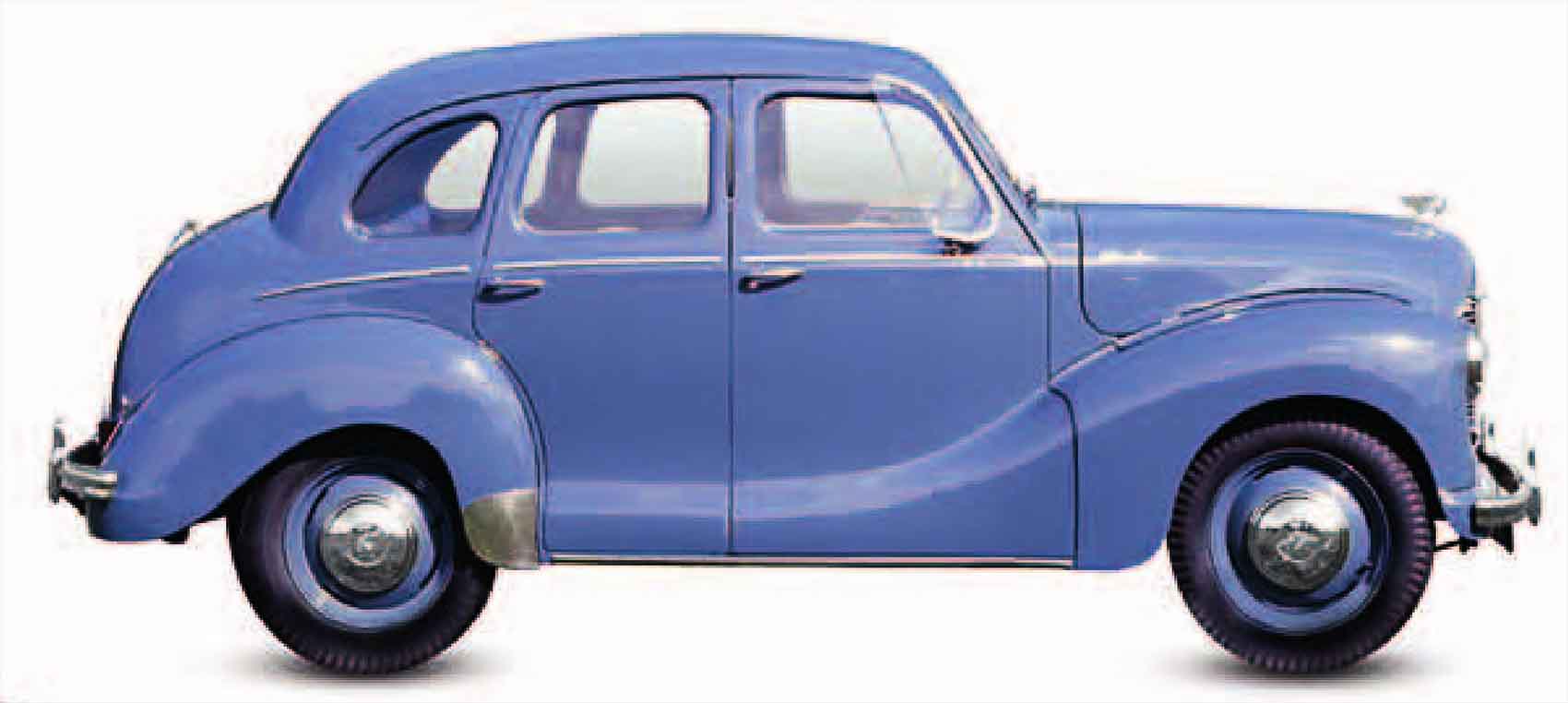
| Origin | UK |
| Engine | 1,200 cc, straight-four |
| Top speed | 67 mph (108 km/h) |
Origin UK
Engine 1,200 cc, straight-four
Top speed 67 mph (108 km/h)
Modelled on a pre-war Chevrolet, Austin’s first post-war design was slightly awkward and bulbous-looking, but it sold well thanks to its new overhead-valve engine.
Panhard Dyna 110, 1948
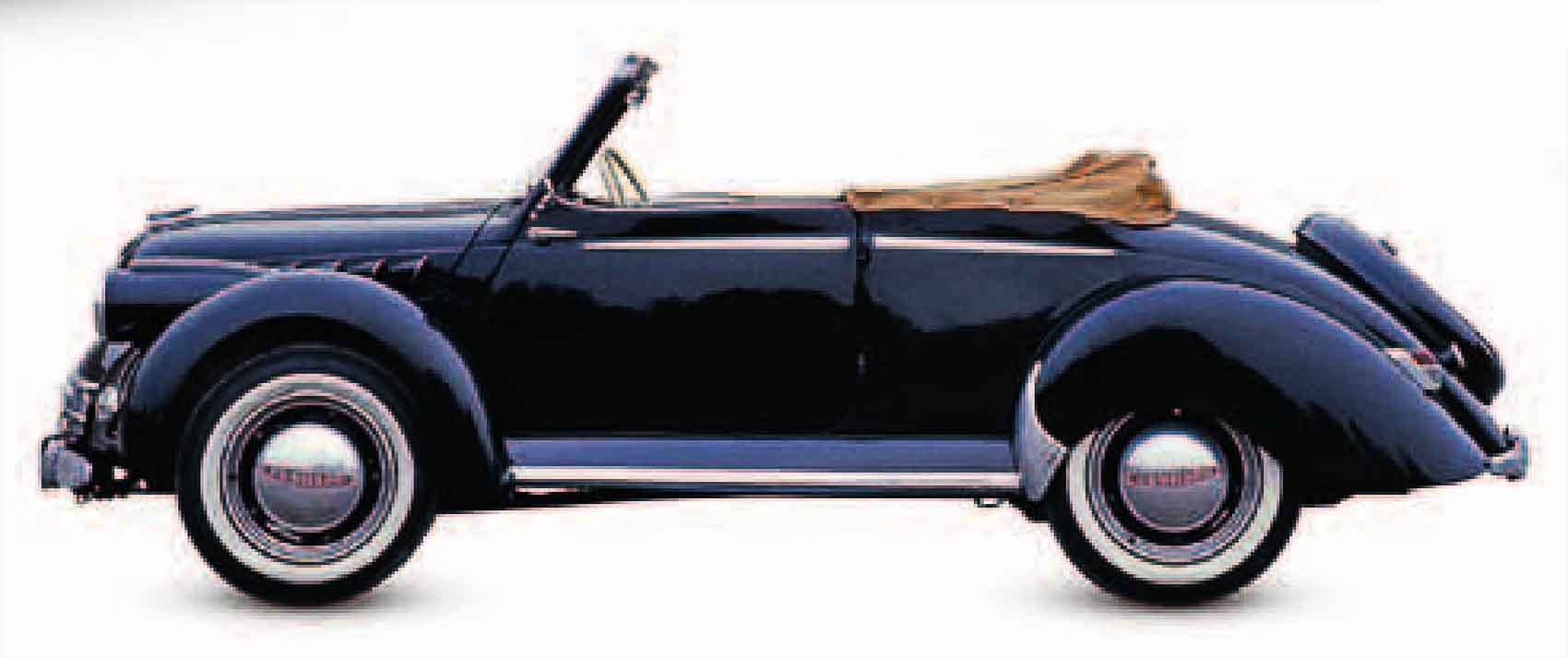
| Origin | France |
| Engine | 610 cc, flat-two |
| Top speed | 68 mph (109 km/h) |
Designed by Jean Albert Grégoire, the Dyna 110 had an aluminum structure, an air-cooled aluminum engine, front-wheel drive, and independent suspension.
Saab 92, 1949
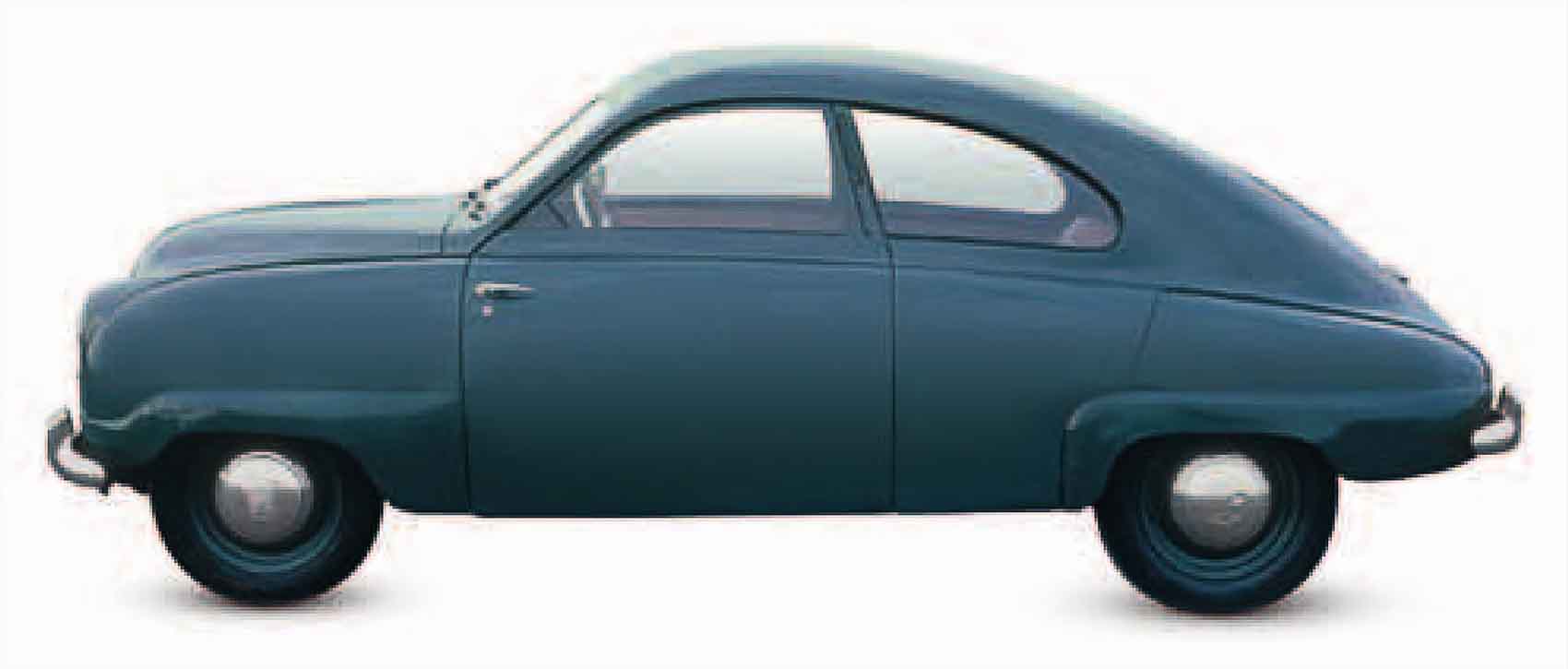
| Origin | Sweden |
| Engine | 764 cc, straight-two |
| Top speed | 65 mph (105 km/h) |
Aircraft maker Saab gave its 92 the most aerodynamic styling of the time, along with front-wheel drive and a two-stroke engine. The 92 proved a very successful rally car.
It is a quote. The Definitive Visual History Of The Automobile 2011




